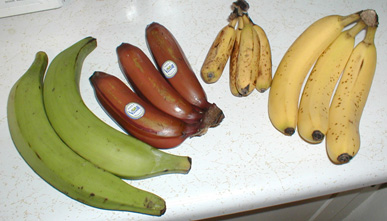Facts About Cooking banana
Cooking bananas, commonly referred to as plantains or green bananas, are a staple in many global cuisines. As part of the Musa genus, these bananas are starchy and ideal for culinary use, whether they are ripe or unripe. Their year-round availability ensures they remain a reliable food source in regions such as West and Central Africa, the Caribbean, Central America, and northern South America.
The term "plantain" is generally used to describe any banana variety cooked before consumption, despite the absence of a strict botanical distinction between bananas and plantains. Technically, "plantain" references true plantains, while other starchy bananas used for cooking are simply known as "cooking bananas."
Plantains are rich in starch, especially when green. These green plantains are typically fried or cooked. As they ripen and turn yellow, their texture becomes softer, and some of the starch converts to sugar, rendering them slightly sweeter. Plantains can be fried, boiled, baked, or grilled. In tropical regions, plantains are a vital source of carbohydrates and are rich in potassium and dietary fiber, with an average plantain containing approximately 220 calories.
From a scientific perspective, modern plantains are sterile triploids in the AAB Group. Other significant cooking banana groups include the East African Highland bananas of the AAA Group and the Pacific plantains of the AAB Group. Each region has its own unique plantain dishes, such as aloco in Ivory Coast, boli in Nigeria, and matoke in Uganda. In Puerto Rico, plantains are fundamental in dishes like alcapurria and mofongo.
Beyond traditional dishes, plantains are versatile and can be transformed into chips, flour, drinks, and even ketchup. Nutritionally, they provide a good mix of carbohydrates, vitamins B6 and C, magnesium, and potassium. However, they are not a significant source of vitamin A. It is worth noting that some individuals may be allergic to plantains, similar to other food allergies or latex-fruit syndrome.

 Chad
Chad